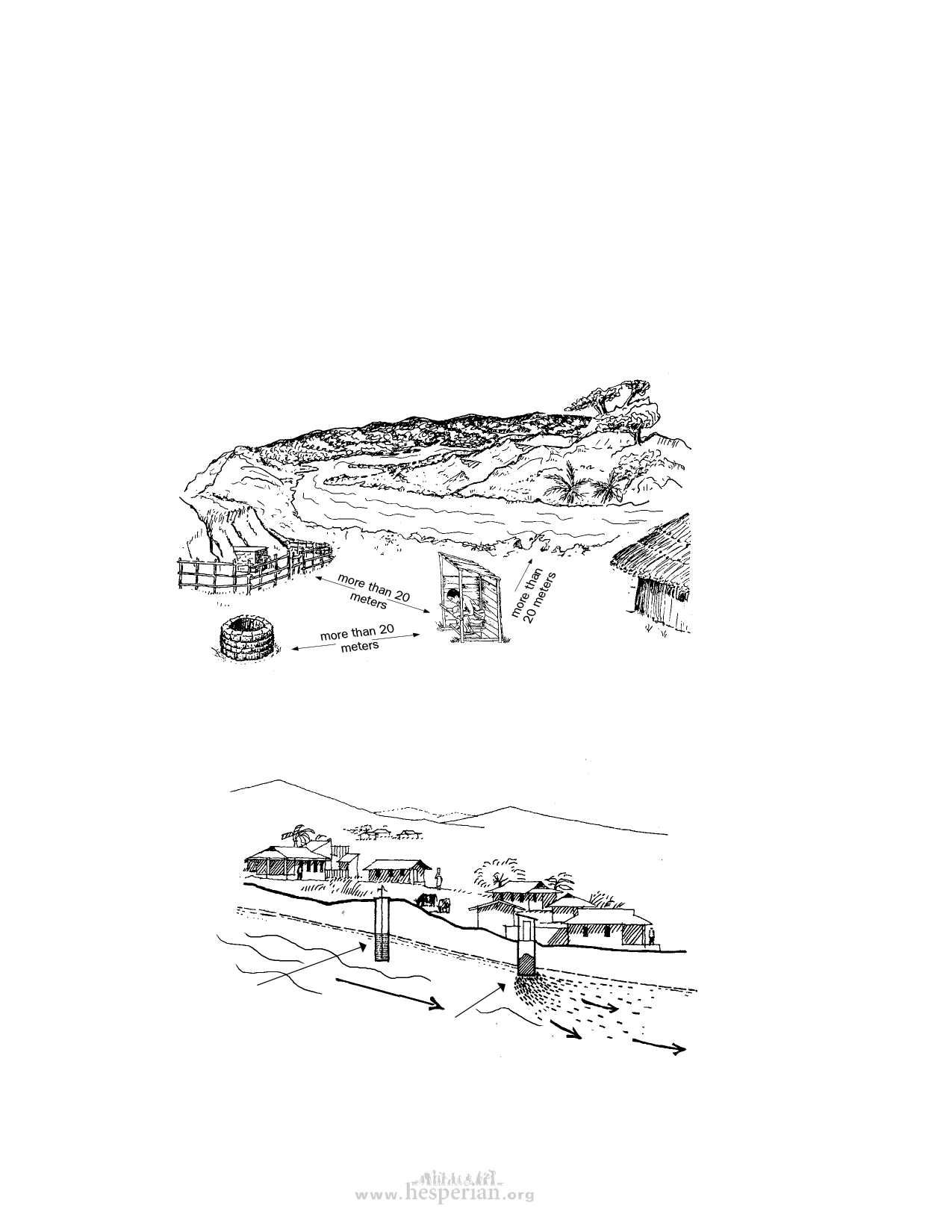
28 Sanitation and Cleanliness for a Healthy Environment
Where to build a toilet
When deciding where to build a toilet, make sure you will not pollute wells or
groundwater. The risk of groundwater pollution depends on local conditions such as
the type of soil, the amount of moisture in the area, and the depth of the groundwater.
But some general rules can ensure safety under most conditions.
The bottom of the pit (if it is a pit toilet) or the chamber (if it is a compost toilet)
should be at least 2 ½ meters above the groundwater. If you dig a pit for a toilet and
the soil is very wet, or if the pit fills with water, this is a bad place to put a toilet. Keep
in mind that water levels are much higher in the wet season than in the dry season.
Do not build pit toilets on ground that gets flooded.
When there is a risk of groundwater pollution from pit toilets, consider building an
above-ground toilet, such as the dry toilet on page 37.
momreettehrasn 20
morme ethtearns20
A toilet should be at least 20 meters from
rivers, lakes, springs, streams and wells.
Groundwater flows downhill. So, if there is no choice but to build a toilet in a place
where there is a risk of groundwater pollution, place the toilet downhill from nearby
wells.
Well water for
drinking
Waste entering ground
water from pit toilet
Wells should be uphill from pit toilets because
groundwater flows downhill.